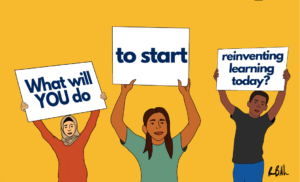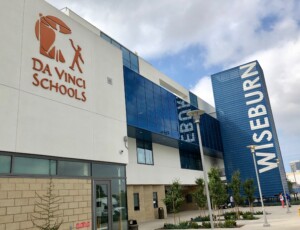Four Trends Influencing Education

A fitness tracker changed my life—it changed how I think about goal-setting and monitoring my exercise, it changed the intentionality of my travels, and it created a new global community of people who share my interests. I’m not alone; about a quarter of U.S. adults use some kind of tracker. The quantified life is one of four new trends influencing education.
My last two posts have reviewed four mega trends and four emerging trends in learning. This post considers four adjacent trends that are impacting society at large and, as a result, are impacting education directly and indirectly.
| Category | Mega Trends | Emerging Trends | Adjacent Trends |
| Aims | New goals (what) | Contribution (why) | Inclusion (who) |
| Strategies | Active learning | Immersive learning | Lifelong learning |
| Measures | Competency | Success skills | Quantified life |
| Supports | Integrated services | Guidance | Mindfulness |
1. Inclusion and equity. Organizations nationwide, even worldwide, are coming to terms with the unfinished business of race, inclusion, diversity and equity. Rapid social progress on LGBTQ rights and visible campaigns (e.g., #BlackLivesMatter, #MeToo) in response to unaddressed inequity have caused learning institutions to reconsider their culture, practices and policies.
In 2017, NewSchools Venture Fund studied race, inclusion, diversity and equity in education organizations and identified big gaps. In response, they have been promoted diverse leadership. Education Board Partners is helping nonprofit boards become more representative.
Carlos Moreno just hosted a five-part series on race for Big Picture Learning and spoke about it at their annual conference. His efforts are representative of a high percentage of school districts and networks trying hard to be more inclusive and to promote more equitable results.
A recent convening featuring student leaders suggested that while some high schools are making progress, more needs to be done at leading universities in order to create more inclusive environments.
For education leaders, ignoring or inadequately dealing with the drive for equity and inclusion will get you fired. The flip side is that being proactive and welcoming can boost enrollment, completion and success rates of learners.
2. Lifelong Learning. About ten years ago, there was a widespread recognition that learning for a period of 16 years and then working for 40 years didn’t work anymore—that learning must be ongoing to adapt to the innovation economy.
In 2015, “Learners for Life” was one of the five XQ Learner Goals framing the big grant competition that sought to reinvent high school. They defined the goal as “Self-driven, self-directed. Curious learners—about themselves, and the world. Inventors of their own learning paths, careers, and lives.”
“Learning about how one learns” also showed up in a Chinese graduate profile in 2016.
For schools, the lifelong learning trend means helping learners to become more aware of how they learn best and cultivating productive learning habits including journaling and curating a portfolio. It means more voice and choice in learning, and less routine and compliance. For postsecondary institutions, the trend means catering to the needs of adult learners and cultivating long-term learning relationships.
3. Quantified Life. Beyond fitness, consumers are seeing more comprehensive information about the weather, their health, their driving, their screen time. With sensors and cameras everywhere, it’s 24/7 surveillance with few agreements in place.
For schools, the shift from print to digital learning has produced a dramatic increase in the amount of formative feedback to learners (although a lack of interoperability currently impedes its usefulness). Schools can help students cope with the quantified life by learning how to monitor their own data and take ownership of their learning profiles.
4. Mindfulness. Top performers in every field frequently use some kind of mindfulness routine. It’s part of a broader wellness movement illustrated by Arianna Huffington’s founding of Thrive Global.
Schools worldwide are adopting broader goals (mega trend number one) that frequently incorporate social and emotional learning and that can often incorporate practices of mindfulness.
A well respected example in secondary education is Compass, a holistic human development program from Valor Collegiate Academies in Nashville and now adopted by networks across the country. Compass has four directions—Aligned Actions, Big Heart, Sharp Minds, Noble Purpose—culminating in a fifth, True North. The school day starts in Circles, a safe place to build trust, allow people to fully be themselves and to create community. It includes mindfulness and intentional facilitation that helps learners gain control of their own behavior and collaborate with others.
These four trends—inclusion, lifelong learning, quantified self and mindfulness—are becoming ubiquitous in the media and becoming part of the culture. Many schools are trying to understand what they mean for practices and reporting.
The next blog in this five-part series covers four trends likely to rise in 2020.
For more, see:
- Four Mega Trends Reshaping Global Learning
- 10 Reasons Why Lifelong Learning is the Only Option
- Leadership and Design Skills Chart the Future of Work
Stay in-the-know with innovations in learning by signing up for the weekly Smart Update.
This post includes mentions of a Getting Smart partner. For a full list of partners, affiliate organizations and all other disclosures, please see our Partner page.
This post was originally published on Forbes.








0 Comments
Leave a Comment
Your email address will not be published. All fields are required.